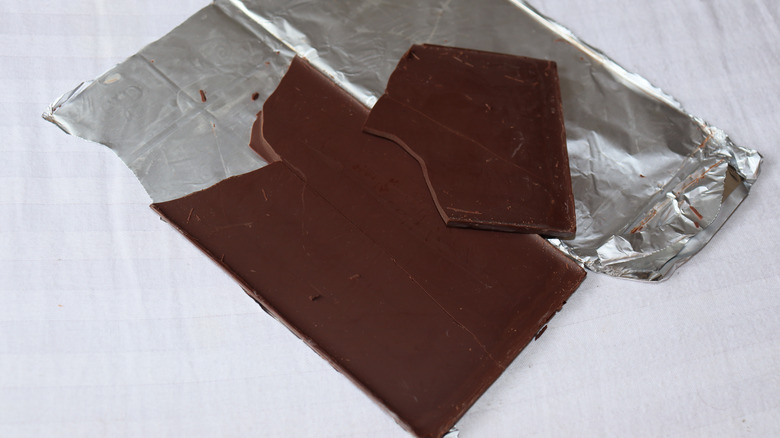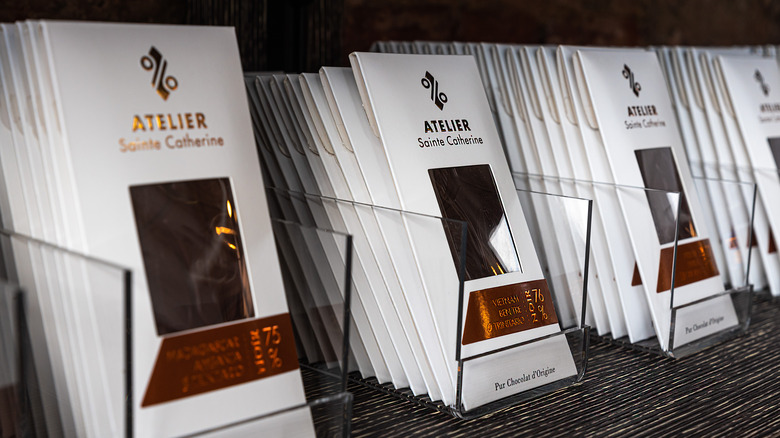What Does 'Single-Origin' Really Mean On A Chocolate Bar Label?
In theory, the term single-origin on a bar of chocolate is supposed to provide consumers with the same sort of reliable information found on a bottle of wine, or a bag of coffee. For example, single-origin labels should offer a provenance, sharing information about the producer, and the singular region where the cacao beans were grown, notes Cooking Light. Just as wines express their "terroir" — the soil and climate where they were grown, per VinePair – single-origin chocolates should showcase a consistent quality and flavor profile that is indicative of the unique region from which the cacao beans were sourced.
However, as Bar and Cocoa points out, that's not always how it works in practice. For starters, single-origin labels are often extremely broad, meaning they will refer to a country rather than a specific farm grower or region. This can make it hard to generalize about the beans or their flavor profile, as they are being sourced across an enormous area. A single origin label also doesn't guarantee anything when it comes to the quality of the chocolate, or the ingredients that are used to produce it.
So what does the term "single-origin" really mean? Does it signify anything beyond the country where the beans originated? After all, single-origin chocolate is often quite pricey, notes America's Test Kitchen.
What to look for when buying 'single-origin' chocolate
The vast majority of the world's cacao beans are grown within 20 degrees of latitude north or south of the equator, notes America's Test Kitchen, which is to say mostly in tropical environments. This growing area includes many countries, but according to Aguara Chocolate, there are no internationally agreed upon regulations for what constitutes single-origin chocolate.
A few countries, however, have established a reputation for very high standards when it comes to chocolate growing or production. Single origin chocolate consumers, like wine connoisseurs, are thus advised to familiarize themselves with the best growing locales and benchmark producers. Madagascar and Venezuela, for example, are two countries famed for growing top quality single origin cacao beans, confirms Chocolate Trading Co. France, meanwhile, well-known for its appellation systems for wine and cheese, likewise offers grand cru and premier cru classifications for the production of chocolate, observes Aguara Chocolate. It should come as no surprise, then, that French chocolatiers such as Bonnat, Michel Cluizel, and Valrhona are considered to be first-class producers of single origin chocolate bars, per Chocolate Trading Co.
Although some single origin labels list only the country of origin, top producers often offer amplifying information about the cacao beans and the estates from which they were sourced. Such specificity is generally a good indicator of good quality. In fact, as America's Test Kitchen points out, in recent years single origin has largely become synonymous with a single estate or grower.

